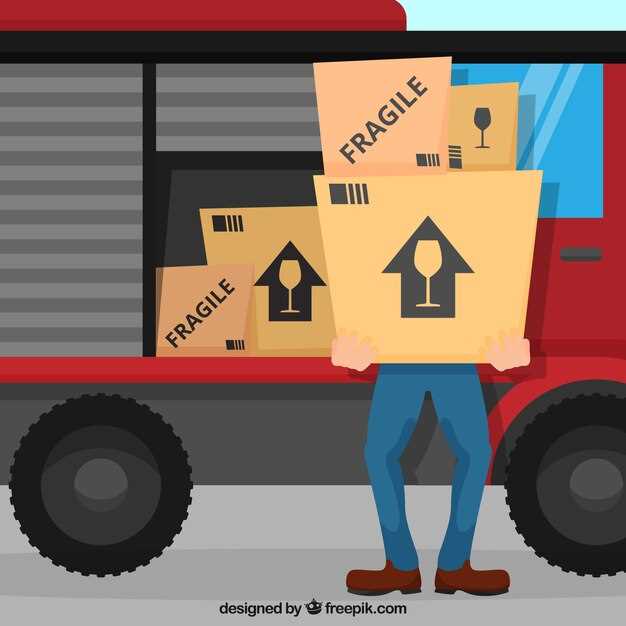
Driving a truck across diverse terrains can be a challenging yet rewarding experience. However, unforeseen circumstances can lead to a truck becoming stuck, whether due to muddy conditions, snow, or rough road surfaces. When faced with such a situation, understanding safe recovery methods is essential to prevent damage to the vehicle and ensure the safety of all involved.
Preparation and Knowledge are key before attempting any recovery operation. Familiarity with the specific truck model, its weight distribution, and the nature of the terrain can significantly influence the recovery process. Additionally, having the right equipment on hand, such as towing straps, winches, and traction aids, can make a substantial difference in successfully freeing a stuck truck.
Implementing recovery techniques requires caution and adherence to safety protocols. Always assess the situation to determine the best approach, whether it’s using a winch to pull the truck or enlisting the help of another vehicle. Understanding the mechanics of the recovery process not only aids in rescuing the vehicle but also minimizes risks and potential injuries to bystanders and operators.
In this article, we will explore various safe methods for recovering a stuck truck, providing practical tips and insights to navigate these challenging situations effectively. By following these guidelines, truck operators can enhance their recovery skills and tackle roadside emergencies with confidence.
Assessing the Situation and Ensuring Safety

Before attempting to recover a stuck truck, it is crucial to assess the situation thoroughly. Begin by evaluating the environment around the vehicle. Look for potential hazards such as uneven terrain, steep inclines, or hazardous weather conditions that could complicate the recovery process. Identifying these risks allows for better planning and can help prevent accidents.
Next, check the condition of the truck. Understand how deeply it is stuck, whether in mud, snow, or sand, and whether it has sustained any damage during the incident. Inspect the tires, undercarriage, and engine to ensure that they are functioning properly and that there are no leaks of fluids that could pose additional risks during recovery.
Ensure that all necessary safety equipment is available before proceeding. This includes high-visibility vests, cones, or flares to warn other drivers, as well as recovery straps, jacks, and appropriate tools for the job. Additionally, verify that communication devices, such as radios or mobile phones, are operational in case emergency assistance is required.
It’s also essential to evaluate the surroundings for bystanders or other vehicles. Keep non-essential personnel at a safe distance from the recovery area to minimize the risk of injury. If working on a busy roadway, position warning signs or traffic cones to alert approaching traffic.
Finally, establish a clear plan of action that outlines each step of the recovery process. Assign specific roles to team members if working with others to ensure efficiency and safety. The primary goal is to recover the vehicle while safeguarding everyone involved. Safety should always be the top priority.
Choosing the Right Equipment for Recovery
When tasked with recovering a stuck truck, having the appropriate equipment is crucial for ensuring safety and efficiency. The choice of tools can significantly impact the success of the recovery operation, minimizing risks to personnel and equipment.
Winches are among the most essential tools for truck recovery. They come in various capacities, so it’s important to select a winch that matches or exceeds the weight of the vehicle being recovered. Electric winches are suitable for lighter trucks, while hydraulic winches are more effective for larger, heavier vehicles.
Recovery Straps and Chains are vital components as well. Recovery straps are specifically designed to absorb the shock of pulling a vehicle, thus reducing the risk of damage to both the truck and the recovery vehicle. Chains, although stronger, can be harsher on the vehicles involved, so proper techniques must be used when employing them.
Shackles are necessary for connecting recovery straps or chains to the tow point on the truck. Opt for heavy-duty, rated shackles to withstand the forces exerted during the recovery. Additionally, always inspect shackles before use to ensure they are free from cracks and deformities.
Another recommended tool is the snatch block, which allows for a redirected pull, effectively doubling the pulling power. This tool is valuable in scenarios where the truck is situated at an angle or when the recovery vehicle cannot get close enough to pull directly.
Tire Inflation Kits can be helpful if the truck’s tires are deflated or stuck in mud. High-pressure air can be used to reinflate the tires, improving traction and allowing for easier recovery. Moreover, traction mats can be utilized to provide additional grip for the tires, reducing the chances of them spinning in place.
Lastly, personal protective equipment (PPE) should never be overlooked. Equip all personnel involved in the recovery with safety gear, including helmets, gloves, and steel-toed boots, to ensure their safety during the operation.
Choosing the right equipment is fundamental for a safe and successful recovery operation. Assessing the situation and selecting tools that fit the specific challenges presented will make the process more efficient while ensuring the safety of all involved.
Step-by-Step Techniques for Safe Recovery

When a truck becomes stuck, it’s essential to follow safe and effective recovery techniques to avoid further damage to the vehicle or surrounding environment. Below are detailed steps for a safe recovery process.
1. Assess the Situation: Begin by evaluating the conditions around the stuck truck. Check the terrain, weather, and any nearby obstacles. Understand how the truck became stuck and identify the best approach for recovery.
2. Secure the Area: Ensure that the recovery site is safe for all personnel involved. Set up warning signs or cones to alert other drivers. If possible, use reflective vests to make team members more visible.
3. Gather Necessary Equipment: Collect all required tools and equipment for recovery. This may include tow straps, recovery boards, shovels, and a suitable recovery vehicle. Ensure that all equipment is in good condition and rated for the weight of the stuck truck.
4. Clear the Area Around the Tires: If possible, dig out any mud, snow, or debris around the tires of the stuck truck. This will provide additional traction and reduce strain on the vehicle during recovery.
5. Use Recovery Straps: Attach a recovery strap to the stuck truck’s rear or front pull points. Make sure to follow proper attachment procedures, securing the strap to both the recovery vehicle and the stuck truck securely.
6. Employ a Recovery Vehicle: Utilize a recovery vehicle that has sufficient power to pull the stuck truck free. Approach the stuck truck slowly, ensuring that the angle of pull is correct to prevent damage to both vehicles.
7. Apply Gentle Force: Begin pulling the stuck truck slowly and steadily. Gradually increase the tension on the recovery strap to avoid sudden jerks that could cause damage. Communicate clearly with all team members during this process.
8. Monitor for Signs of Trouble: Keep an eye on both vehicles and the recovery equipment for any signs of failure. If the recovery strap shows excessive strain or if the stuck truck is not moving, stop and reassess the situation.
9. Use Extra Traction Aids: If the truck remains stuck, consider using traction aids such as sand or gravel under the wheels. Recovery boards can also provide additional grip to help the vehicle shift out of its stuck position.
10. Final Recovery: Once the truck is free, ensure that it is stable before proceeding. Check for any damage sustained during the process and address potential mechanical issues. Always prioritize safety over speed during recovery.
By adhering to these step-by-step techniques, the recovery of a stuck truck can be performed safely and efficiently, minimizing risks and promoting a successful outcome.




